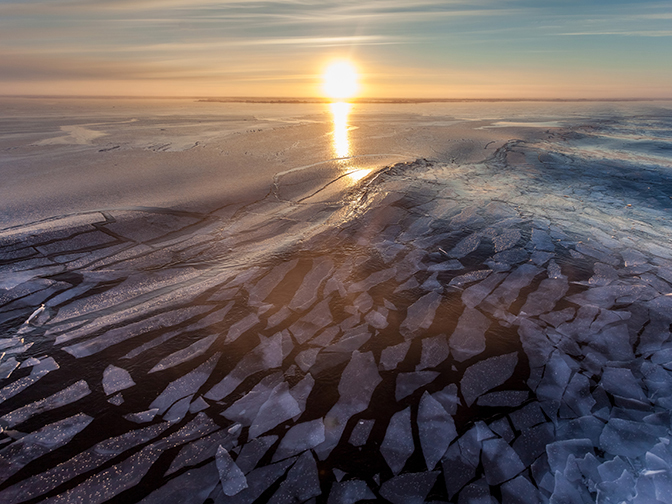

ECMWF is part of a new EU-funded project investigating ways to improve weather and climate predictions in the face of a rapidly changing Arctic climate.
The four-year APPLICATE project brings together 16 partners from nine countries.
Its aim is to enhance weather and climate prediction capabilities not only in the Arctic, but also in Europe, Asia, and North America.
A focus on the Arctic is important for improved predictions of weather and climate in the mid-latitudes, according to a statement published by the Alfred Wegener Institute Helmholtz Centre for Polar and Marine Research (AWI), the lead partner in the project.
This is because the changes taking place in the Arctic due to climate change – the retreat of sea ice, warming seas and a warming atmosphere – have the potential to influence weather and climate in the mid-latitudes.
“In the Arctic, today’s prediction systems suffer from a lack of observations, model shortcomings and deficits in effectively combining models with observations,” APPLICATE Project Coordinator Prof. Thomas Jung said.
“Our aim is to design a future Arctic observing system that enhances our predictive capacity. Additionally, the representation of critical processes in models will be improved and new ways of assimilating observations into models will be explored.”
ECMWF’s role
ECMWF’s focus is on the coupling of ocean and sea-ice models, the implementation of a multi-layer snow model on land surfaces and sea ice, and the enhancement of polar analysis and forecast skill diagnostics.
The Centre is leading a work package to support Arctic observing system design.
Through observing system experiments, the project will evaluate the contribution of selected observations to analysis accuracy and predictive skill.
The results will inform the design of future observing systems and suggest enhancements to prediction systems for use in operational numerical weather prediction and in climate projections.
ECMWF will also provide comprehensive datasets from operational models for the scientific community during the Year of Polar Prediction (YOPP).
Peter Bauer, Deputy Director of Research at ECMWF, is leading the Centre’s contribution to APPLICATE.
“The model and diagnostic method developments complement ECMWF’s strategic goal to extend its Earth system modelling capabilities, for which the coupling between ocean, sea ice and atmosphere is essential,” he said.
“This enhancement is expected to help extend predictive skill in the medium-to-monthly range by linking processes in the polar region and the mid-latitudes.”
ECMWF is currently recruiting a scientist to work on modelling Arctic processes and to contribute to the APPLICATE project. The closing date for applications is 12 December 2016; for details, see our Jobs page.
The APPLICATE project has received funding from the European Union's Horizon 2020 research and innovation programme under grant agreement No 727862.
Top photo: Arctic sea ice (Alfred-Wegener-Institut/M. Hoppmann)
